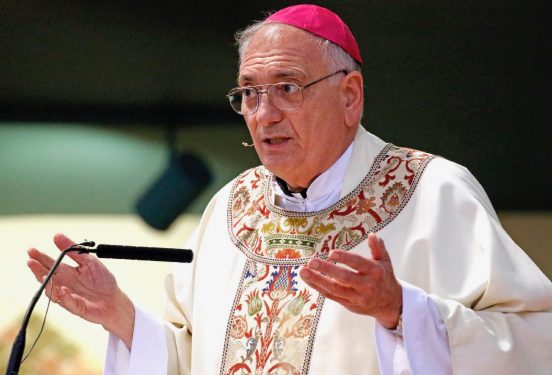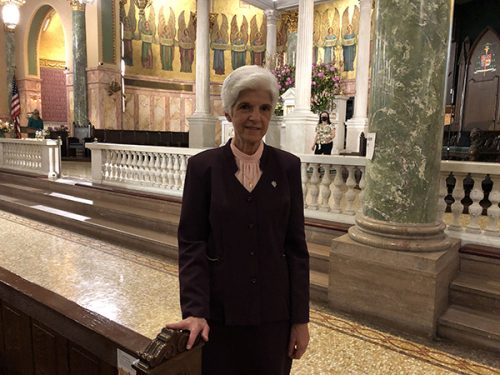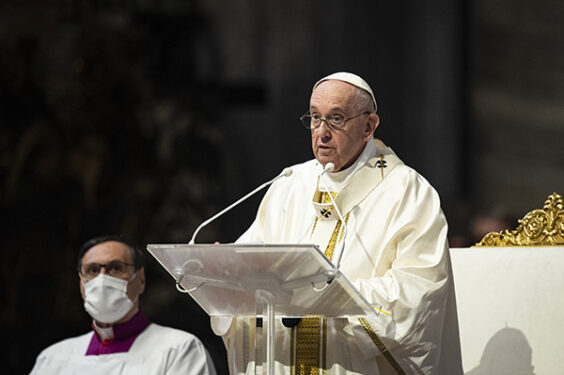
PROSPECT HEIGHTS — Pope Francis has called on the world’s bishops to gather in Rome for a synod, but long before the clergymen board their flights to the Eternal City, a great deal of preparation will take place — right down to the diocesan level.
Unlike previous synods during Pope Francis’ papacy, which dealt with topics such as the family and evangelization in the Amazon region, the new synod will be broader in scope. The topic of the upcoming synod, set for October 2023, is “synodality.”
Synodality comes from two Greek words meaning “common road.” The gathering two years from now is expected to focus on the process of a synod itself and how the clergy and the laity can work together to move the Catholic Church forward in the 21st Century.
The formal title of the synod is: “For a Synodal Church: Communion, Participation and Mission.”
“Synodality is the sense that we’re working together on this,” said Sister Maryann Seton Lopiccolo S.C., episcopal delegate for religious in the Diocese of Brooklyn. “It’s not just that I give you my answers and then you figure out what to do with them. It’s the conversations that happen among us, so that you are building a sense of mutual companionship and ownership of what the Church is about.”

While the bishops aren’t set to formally gather in Rome until October 2023, Pope Francis has set up a two-year synod preparation process that will begin with a diocesan phase (October 2021 to April 2022) and move to a continental phase (September 2022 to March 2023) before landing at a universal church phase — the synod in Rome in October 2023.
In the first phase, the Holy Father wants individual dioceses around the world to gather input and ideas on synodality, or processes for collaboration, from local clergy, women religious, and laypeople and then submit those ideas in the form of written reports to their national bishops’ organizations.
In the case of the United States, that would be the U.S. Conference of Catholic Bishops (USCCB).
To give dioceses a roadmap, the Vatican released a 42-page guidebook, called a vademecum, that includes prayers and questions local Catholic communities are asked to give feedback on.
Bishop DiMarzio will celebrate a Mass to mark the opening of the diocesan phase on Saturday, Oct. 9, at the Co-Cathedral of St. Joseph at 11 a.m. After that, the diocesan preparations for the synod will be in full swing.
Sister Maryann — along with Father Joseph Gibino, vicar for evangelization and catechesis for the diocese — has been appointed by Bishop DiMarzio to serve as co-directors and contact persons for the diocesan phase.
Their work will involve coordinating meetings at the 22 deaneries in the diocese. Listening sessions will aim to gather input and ideas not only from clergy and women religious but from everyday Catholics, too.
“When Pope Francis is talking about a synodal Church, he’s talking about a Church that really does journey together,” Father Gibino said. “What does that mean? That’s what we’re going to be fleshing out in this process. And journey together in the Holy Spirit: All of the discussions have to be grounded in a real prayerful attitude of openness to the Holy Spirit.”

The people in the pews will be vital to the process, according to Bishop DiMarzio, who used the imagery of a pyramid and a circle to explain his point.
“The key image that I’m trying to get across is that the Church is no longer like a pyramid. It’s a circle. It’s still hierarchical. Everybody is gathered around the pope. That’s the image that this process is trying to get through our heads,” he said.
Both Father Gibino and Sister Maryann have put a lot of thought into how to gather input from as many sources as possible.
“We’re casting a wide net,” Father Gibino said.
“We are looking at how we involve people in the pews — people who don’t belong to societies and councils and organizations but would have a lived experience and opinion about the Church. For me, that’s a big point,” Sister Maryann said.
The discussion will involve different areas of Church life. Bishop DiMarzio has ideas he plans to share—on such subjects as immigration.
“We are really a migrant diocese,” he said. “And the question I posed in the past is, how do we get from integration to communion? We have integrated the immigrants … They have their Masses. They have their place in the apostolate. But how do we become one with them in communion? They seem always to be separate.”
After those discussions, the national conferences, like the USCCB, will take the reports, bring the various ideas together, and craft proposals.
At that point, bishops on each continent will meet from September 2022 to March 2023 to discuss the proposals.
The Vatican’s secretariat for synods will compose a working document, or “instrumentum laboris,” that will be taken up in October 2023 at the synod.
But the work starts locally, and soon.
“It’s an amazing undertaking, which is really very exciting,” Father Gibino said.
